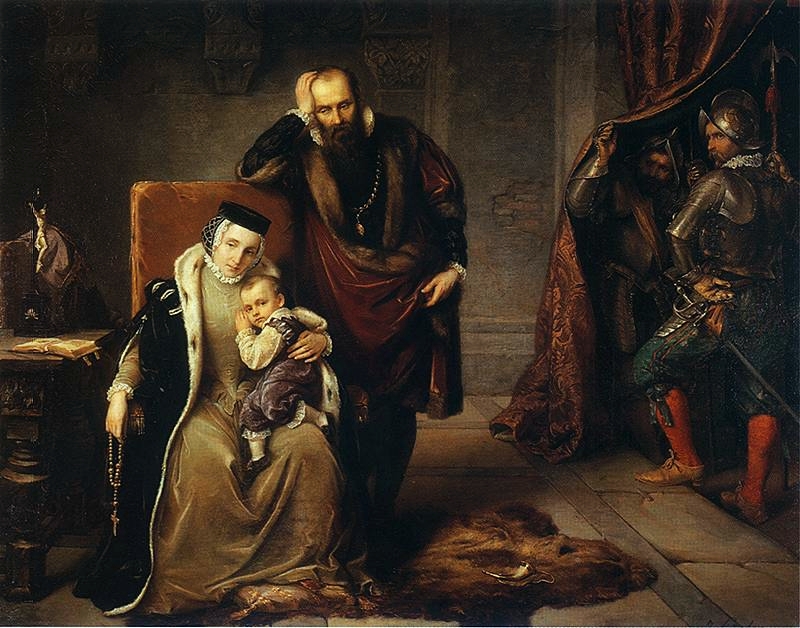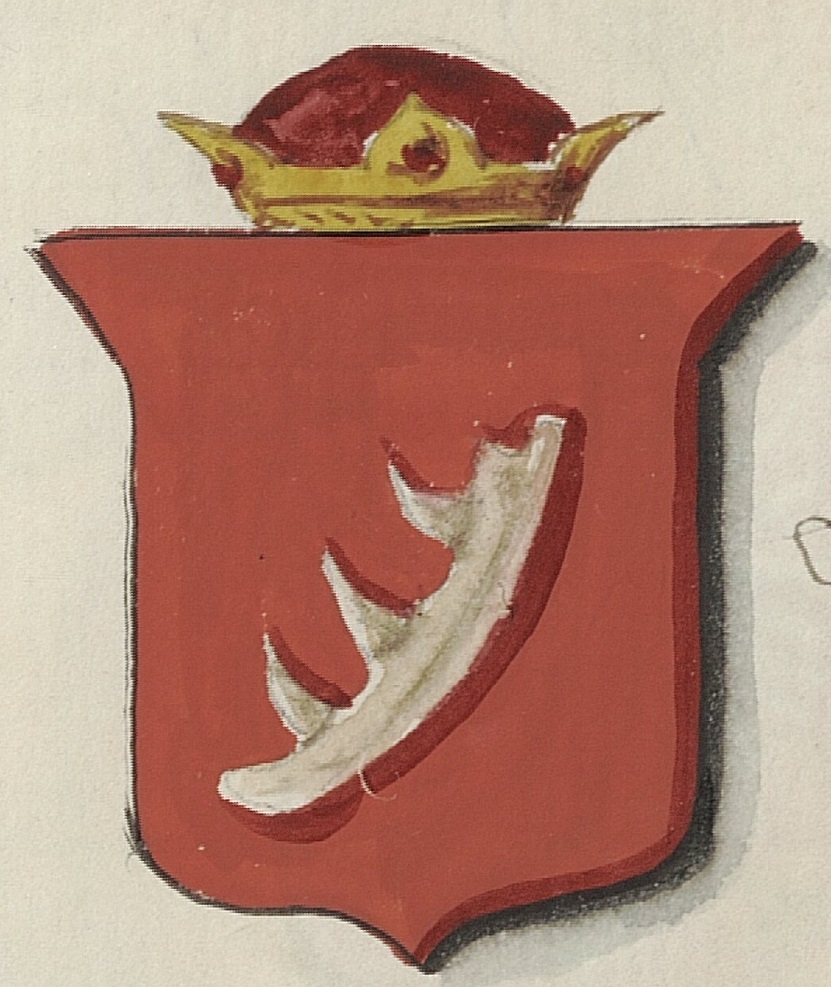|
Inflanty Voivodeship
The Inflanty Voivodeship (), or Livonian Voivodeship (), also known as Polish Livonia, was an administrative division and local government in the Polish–Lithuanian Commonwealth, since it was formed in the 1620s out of the Wenden Voivodeship and lasted until the Partitions of Poland, First Partition of the Commonwealth in 1772. The Inflanty Voivodeship was one of the few territories of the Polish–Lithuanian Commonwealth to be ruled jointly by Poland and Lithuania. Overview The Inflanty Voivodeship, also called the ''Duchy of Inflanty'', due to a 1667 bill of the Sejm, was the minority remainder of the Duchy of Livonia, which had been conquered by the Swedish Empire during the Polish–Swedish War (1621–1625), Polish–Swedish War of 1621–1625. The seat of the voivode was Dyneburg (Daugavpils). The name ''Inflanty'' is derived through Polonization of ''Livland'', the German name for Livonia. In modern times the region is known as Latgalia in the Republic of Latvia. [...More Info...] [...Related Items...] OR: [Wikipedia] [Google] [Baidu] [Amazon] |
Polish–Lithuanian Commonwealth
The Polish–Lithuanian Commonwealth, also referred to as Poland–Lithuania or the First Polish Republic (), was a federation, federative real union between the Crown of the Kingdom of Poland, Kingdom of Poland and the Grand Duchy of Lithuania, existing from 1569 to 1795. This state was among the largest, most populated countries of 16th- to 18th-century Europe. At its peak in the early 17th century, the Commonwealth spanned approximately and supported a multi-ethnic population of around 12 million as of 1618. The official languages of the Commonwealth were Polish language, Polish and Latin Language, Latin, with Catholic Church, Catholicism as the state religion. The Union of Lublin established the Commonwealth as a single entity on 1 July 1569. The two nations had previously been in a personal union since the Union of Krewo, Krewo Agreement of 1385 (Polish–Lithuanian union) and the subsequent marriage of Queen Jadwiga of Poland to Grand Duke Jogaila of Lithuania, who was cr ... [...More Info...] [...Related Items...] OR: [Wikipedia] [Google] [Baidu] [Amazon] |
Livonian Brothers Of The Sword
The Livonian Brothers of the Sword (; ) was a Catholic Church, Catholic Military order (monastic society), military order established in 1202 during the Livonian Crusade by Albert of Riga, Albert, the third bishop of Riga (or possibly by Theoderich von Treydend). Pope Pope Innocent III, Innocent III sanctioned the establishment in 1204 for the second time. The membership of the Crusades, crusading Military order (religious society), order comprised warrior monk, warrior monks, mostly from northern Germany, who fought Baltic peoples, Baltic and Baltic Finnic peoples, Finnic Paganism, pagans in the area of modern-day Estonia, Latvia and Lithuania. Alternative names of the Order include Christ Knights, Swordbrothers, Sword Brethren, Order of the Brothers of the Sword, and The Militia of Christ of Livonia. The seal reads: ''+MAGISTRI ETFRM (et fratrum) MILICIE CRI (Christi) DE LIVONIA''. Following their defeat by the Samogitians and Semigallians in the Battle of Saule in 1236, the s ... [...More Info...] [...Related Items...] OR: [Wikipedia] [Google] [Baidu] [Amazon] |
Jan Zamoyski
Jan Sariusz Zamoyski (; 19 March 1542 – 3 June 1605) was a Polish nobleman, magnate, statesman and the 1st '' ordynat'' of Zamość. He served as the Royal Secretary from 1565, Deputy Chancellor from 1576, Grand Chancellor of the Crown from 1578, and Great Hetman of the Crown from 1581. Zamoyski was the General Starost of the city of Kraków from 1580 to 1585, Starost of Bełz, Międzyrzecz, Krzeszów, Knyszyn and Tartu. An important advisor to Kings Sigismund II Augustus and Stephen Báthory, he was one of the major opponents of Bathory's successor, Sigismund III Vasa, and one of the most skilled diplomats, politicians and statesmen of his time, standing as a major figure in the politics of the Polish–Lithuanian Commonwealth throughout his life. Biography Childhood and education Jan Zamoyski was born on 19 March 1542 to Stanisław Zamoyski and Anna Herburt in Skokówka. He started his education in a school in Krasnystaw but when he was thirteen years old h ... [...More Info...] [...Related Items...] OR: [Wikipedia] [Google] [Baidu] [Amazon] |
Voivodeship
A voivodeship ( ) or voivodate is the area administered by a voivode (governor) in several countries of central and eastern Europe. Voivodeships have existed since medieval times and the area of extent of voivodeship resembles that of a duchy in western medieval states, much as the title of voivode was equivalent to that of a duke. Other roughly equivalent titles and areas in medieval Eastern Europe included ban (bojan, vojin or bayan) and banate. In a modern context, the word normally refers to one of the provinces () of Poland. , Poland has 16 voivodeships. Terminology A voi(e)vod(e) (literally, "leader of warriors" or "war leader", equivalent to the Latin "''Dux Exercituum''") was originally a military commander who stood, in a state's structure, next to the ruler. Later the word came to denote an administrative official. Words for "voivodeship" in various languages include the ; the ; the ; the Bulgarian: ''voivoda'' (войвода); the Serbian: ''vojvodina'' (в� ... [...More Info...] [...Related Items...] OR: [Wikipedia] [Google] [Baidu] [Amazon] |
Sigismund III Vasa
Sigismund III Vasa (, ; 20 June 1566 – 30 April 1632 N.S.) was King of Poland and Grand Duke of Lithuania from 1587 to 1632 and, as Sigismund, King of Sweden from 1592 to 1599. He was the first Polish sovereign from the House of Vasa. Religiously zealous, he imposed Catholicism across the vast realm, and his crusades against neighbouring states marked Poland's largest territorial expansion. As an enlightened despot, he presided over an era of prosperity and achievement, further distinguished by the transfer of the country's capital from Kraków to Warsaw. Sigismund was the son of King John III of Sweden and his first wife, Catherine Jagiellon, daughter of King Sigismund I of Poland. Elected monarch of the Polish–Lithuanian Commonwealth in 1587, he sought to unify Poland and Sweden under one Catholic kingdom, and when he succeeded his deceased father in 1592 the Polish–Swedish union was created. Opposition in Protestant Sweden caused a war against Sigismund headed ... [...More Info...] [...Related Items...] OR: [Wikipedia] [Google] [Baidu] [Amazon] |
Stephen Báthory
Stephen Báthory (; ; ; 27 September 1533 – 12 December 1586) was King of Poland and Grand Duke of Lithuania (1576–1586) as well as Prince of Transylvania, earlier Voivode of Transylvania (1571–1576). The son of Stephen VIII Báthory and a member of the Hungarian Báthory noble family, Báthory was a ruler of Transylvania in the 1570s, defeating another challenger for that title, Gáspár Bekes. In 1576, Báthory became the husband of Queen Anna Jagiellon and the third royal election, elected king of Poland. He worked closely with chancellor Jan Zamoyski. The first years of his reign were focused on establishing power, defeating a fellow claimant to the throne, Maximilian II, Holy Roman Emperor, and quelling rebellions, most notably, the Danzig rebellion, Gdańsk rebellion. He reigned only a decade, but is considered one of the most successful Monarchs of Poland, kings in Polish history, Polish and Lithuanian history, particularly in the military realm. His signal ... [...More Info...] [...Related Items...] OR: [Wikipedia] [Google] [Baidu] [Amazon] |
Grand Duchy Of Lithuania
The Grand Duchy of Lithuania was a sovereign state in northeastern Europe that existed from the 13th century, succeeding the Kingdom of Lithuania, to the late 18th century, when the territory was suppressed during the 1795 Partitions of Poland, partitions of Poland–Lithuania. The state was founded by Lithuanians (tribe), Lithuanians, who were at the time a Lithuanian mythology, polytheistic nation of several united Baltic tribes from Aukštaitija. By 1440 the grand duchy had become the largest European state, controlling an area from the Baltic Sea in the north to the Black Sea in the south. The grand duchy expanded to include large portions of the former Kievan Rus' and other neighbouring states, including what is now Belarus, Lithuania, most of Ukraine as well as parts of Latvia, Moldova, Poland and Russia. At its greatest extent, in the 15th century, it was the largest state in Europe. It was a multinational state, multi-ethnic and multiconfessionalism, multiconfessional sta ... [...More Info...] [...Related Items...] OR: [Wikipedia] [Google] [Baidu] [Amazon] |
Union Of Grodno (1566)
The Union of Grodno established a real union between the Grand Duchy of Lithuania and the Duchy of Livonia on 25 December 1566, during the Livonian War. Livonia had submitted itself to Sigismund II Augustus Sigismund II Augustus (, ; 1 August 1520 – 7 July 1572) was King of Poland and Grand Duke of Lithuania, the son of Sigismund I the Old, whom Sigismund II succeeded in 1548. He was the first ruler of the Polish–Lithuanian Commonwealth and t ... by the Treaty of Vilnius (1561). Livonia's administrative division was re-organized with its castellans becoming members of the Lithuanian senate. The union did not impact Livonian jurisdiction, which was to be carried out according to its traditional customs. Sources * * Livonian War 1566 treaties Treaties of the Grand Duchy of Lithuania Treaties of the Duchy of Livonia 1566 in Lithuania {{Treaty-stub ... [...More Info...] [...Related Items...] OR: [Wikipedia] [Google] [Baidu] [Amazon] |
Sigismund Augustus
Sigismund II Augustus (, ; 1 August 1520 – 7 July 1572) was King of Poland and Grand Duke of Lithuania, the son of Sigismund I the Old, whom Sigismund II succeeded in 1548. He was the first ruler of the Polish–Lithuanian Commonwealth and the last male monarch from the Jagiellonian dynasty. Sigismund was elder of two sons of Italian-born Bona Sforza and Sigismund the Old, and the only one to survive infancy. From the beginning he was groomed and extensively educated as a successor. In 1529 he was chosen as king in '' vivente rege'' election while his father was still alive. Sigismund Augustus continued a tolerance policy towards minorities and maintained peaceful relations with neighbouring countries, with the exception of the Northern Seven Years' War which aimed to secure Baltic trade. Under his patronage, culture flourished in Poland; he was a collector of tapestries from the Low Countries and collected military memorabilia as well as swords, armours and jewellery. Sigism ... [...More Info...] [...Related Items...] OR: [Wikipedia] [Google] [Baidu] [Amazon] |
Treaty Of Vilnius (1561)
The Treaty of Vilnius was concluded on 28 November 1561, during the Livonian War, between the Livonian Confederation and the Grand Duchy of Lithuania in Vilnius. With the treaty, the non-Danish and non-Swedish part of Livonia, with the exception of the Free imperial city of Riga, subjected itself to the Grand Duke of Lithuania, Sigismund II Augustus with the ''Pacta subiectionis (Provisio ducalis)''. In turn, Sigismund granted protection from the Tsardom of Russia and confirmed the Livonian estates' traditional privileges, laid out in the ''Privilegium Sigismundi Augusti''. The secularization of the Livonian Order was the "final act" in Livonia's transition from the Middle Ages to the Early Modern era. The territories were re-organized in the Duchy of Courland and Semigallia and the Duchy of Livonia, the latter competing with the Kingdom of Livonia during the war. After its reconquest, Sigismund's successor Stephen Báthory (Batory) ignored the privileges of 1561, granted a ne ... [...More Info...] [...Related Items...] OR: [Wikipedia] [Google] [Baidu] [Amazon] |
Fief
A fief (; ) was a central element in medieval contracts based on feudal law. It consisted of a form of property holding or other rights granted by an overlord to a vassal, who held it in fealty or "in fee" in return for a form of feudal allegiance, services or payments. The fees were often lands, land revenue or revenue-producing real property like a watermill, held in feudal land tenure: these are typically known as fiefs or fiefdoms. However, not only land but anything of value could be held in fee, including governmental office, rights of exploitation such as hunting, fishing or felling trees, monopolies in trade, money rents and tax farms. There never existed a standard feudal system, nor did there exist only one type of fief. Over the ages, depending on the region, there was a broad variety of customs using the same basic legal principles in many variations. Terminology In ancient Rome, a " benefice" (from the Latin noun , meaning "benefit") was a gift of land () f ... [...More Info...] [...Related Items...] OR: [Wikipedia] [Google] [Baidu] [Amazon] |
Vilnius
Vilnius ( , ) is the capital of and List of cities in Lithuania#Cities, largest city in Lithuania and the List of cities in the Baltic states by population, most-populous city in the Baltic states. The city's estimated January 2025 population was 607,667, and the Vilnius urban area (which extends beyond the city limits) has an estimated population of 747,864. Vilnius is notable for the architecture of its Vilnius Old Town, Old Town, considered one of Europe's largest and best-preserved old towns. The city was declared a World Heritage Site, UNESCO World Heritage Site in 1994. The architectural style known as Vilnian Baroque is named after the city, which is farthest to the east among Baroque architecture, Baroque cities and the largest such city north of the Alps. The city was noted for its #Demographics, multicultural population during the Polish–Lithuanian Commonwealth, with contemporary sources comparing it to Babylon. Before World War II and The Holocaust in Lithuania, th ... [...More Info...] [...Related Items...] OR: [Wikipedia] [Google] [Baidu] [Amazon] |






